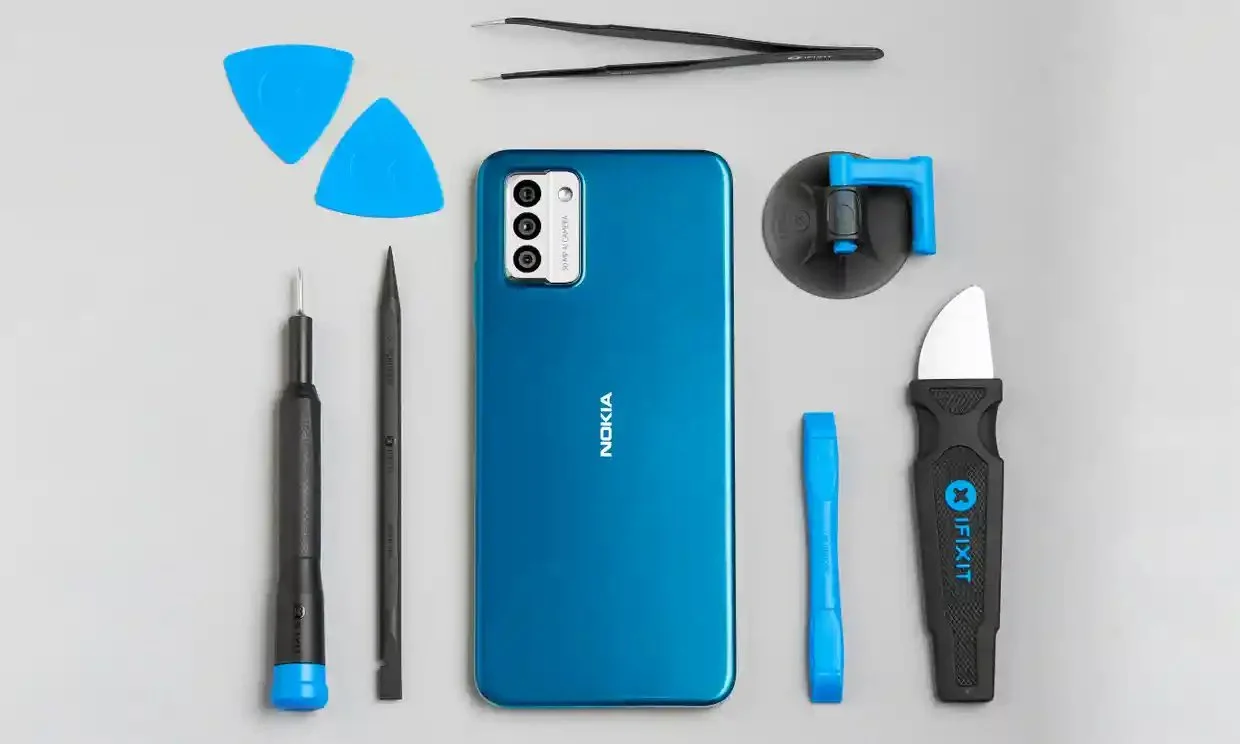#10 :: Ten years in design
Or, why leading by design matters more than ever
Collected this week:
1: Ten years in design: Trends that shaped the design industry, and why they’re important:
A quantified ROI: Investment = growth
Hybrid thinking: 21st century challenges needing innovation
Embrace of an inclusive toolkit: Social issues are business issues
Crossover of new specialisms: Fluid roles but fragmentation
2: Tips and tools: Leveraging design in the next 10 years …
3: What’s interested us this week: AI for good; Repairable design; Biofuel; Art + technology
01: Ten years in design
We heard recently that Apple is lowering its reporting line for design. Its hardware design group will be without a CDO for the first time since the role was created for Jony Ive in 2015, and will instead report into the COO. The absence of a dedicated design voice in the highest discussions at the world’s most design-visible company is surprising yet symbolic.
Does this signal a move from the omnipotent creative chief (mirroring a trend in fashion, where houses from Moncler to Lacoste to AZ Factory have shifted to a collectives model)? Or does it suggest design becoming an ‘undiscipline’, bleeding omnisciently across other fields?
Ten-ish years ago, I published my doctorate on design leadership. Back then, the business of design was a very different landscape. We were only just beginning to isolate and quantify its strategic contributions. So, in light of the Apple CDO deletion, it’s time to re-appraise design leadership. Here we’ve analysed the biggest trends of the last decade, and suggest where firms - big and small - should be investing in the years ahead.
I. A quantified ROI: Investment = growth
In the 2010s, design thinking went stratospheric for its ability to apply problem solving techniques to wider problems, and many agencies oriented their proposition towards solving the problems of business. The methods and tools of design – systems, process, problems – became highly desirable as the era of digital transformation kicked off. This triggered a flurry of M&A, as management consultancies sought to compete on innovation by buying design expertise. There were: Accenture → Fjord and Karmarama; Capgemini → Idean and frog; EY → Seren; Deloitte → Doblin and Market Gravity; McKinsey → Lunar etcetera ...
This shift has proven conclusively the ROI of design. As it moves mainstream, design is being trusted to drive profitability, and research now quantifies its often intangible return:
Design-centric companies outperformed the S&P 500 by 211% in the ten years to 2015, according to the DMI
Businesses with highest degree of design integration increased revenues by 32% over a 5 year period, compared with low design performers, as shown by McKinsey
Firms that prioritise design give a 56% higher total return to shareholders, in comparison with those who don’t, according to the McKinsey research
Investment in design = commercial growthII. Hybrid thinking: 21st century challenges needing innovation
For a discipline whose role has always been the production of ‘more’, design shifted gears as the climate emergency reached critical awareness. In fact, it has taken a prominent role in developing ideas and processes around ‘less’. Many organisations who are struggling to reboot age-old ways of doing business around net zero targets are now looking to design to be the agents of change.
While not a panacea to the challenges faced by the world - innumerable approaches are required to address the climate emergency - design is responding with ingenuity to reimagine problems. Some examples of explorations into alternative means of housing, clothing, and sustaining the growing world population:
Full-stack eco architecture: It’s rare to recycle in construction. Property developer Fabrix developed urban mining, a method where steel, concrete and glass are reclaimed from buildings undergoing demolition. Every step and decision in construction (and destruction) processes have been considered from scratch to be more sustainable, less pollutant, and more energy efficient
Design for disassembly: Danish electricals brand Aiaiai has designed its products to require just one screwdriver for disassembly at the end of the product lifespan
Use of waste products: Adidas committed to ending plastic waste in front of the UN assembly in 2015. The following year, it collaborated with Parley to create shoes and garments using plastic waste found in the oceans. The interesting thing about this collaboration is that it shifted perceptions: from being lauded purely for being sustainable, to being lauded for being well-made and fashionable, and sustainable as a given
Urban mining: The demolition at Broadgate, London, by cutting to reclaim and reuse steel (courtesy of Fabrix)III. Embrace of an inclusive toolkit: Social issues are business issues
Design has long sought to “change existing situations into preferred ones” (in the words of Herbert Simon). Health, wellbeing, and inclusivity became high-agenda in the 2010s, and organisations of all types aimed to navigate towards a more inclusive future. User- and customer experience became critical and entwined with product strategy, and brands emerged that seek to improve the world. The human and social needs of customers, employees and stakeholders started to become as important as profitability. To that end, new methods and tools were needed in business to affect change.
The methods and toolkit of design were adopted to bring about positive impact on products, organisations, and societally, such as:
Co-design: Approaching innovation with the participation of stakeholders to enable needs to be identified and addressed during development. For example, the Alan Turing Institute and Intel co-designed algorithms alongside clinicians for AI driven healthcare software and hardware
Social design: Enhancing, contributing to, and instigating positive social change. For example, architects Carlo Ratti and Italo Rota’s work to design intensive care pods within repurposed shipping containers, that were cheap and quick to construct, during the Covid pandemic
Co-creation: Collaborative efforts involving lots of internal and external groups to identify potential solutions to complex problems. For example, IKEA collaborates with students, research labs and customers to develop innovative solutions to pressing concerns
Ratti / Rota CURA ICU pods were created within repurposed shipping containersIV. Lots of new specialisms: Fluid roles but fragmentation
Design is a broad collective of specialisms, from architecture to genes, to food to fashion. But in recent years, the profession has fragmented into myriad specialist creative roles. A snapshot of industry design job titles:
Consultancies hire for industrial / product design, design research, UX-, UI- business-, service-, visual-, learning-, data-, software-design, and creative technologists…
At Meta, product design, UX research and content strategy fall under the design banner
At Apple, there are prototype-, UX-, motion-, sound-, and production designers
All a bit confusing. By nature, design is a hybrid discipline that doesn’t benefit from being corralled. With so much crossover from one area to the next, over-specialisation feels counterproductive.
However, what’s significant about this is the embedding of design across organisations of all types. Design is infiltrating layers of business decision making, no longer confined to a siloed creative department.
I expect that the fragmentation will be a transitional phase as it beds-in. Because, beyond really technical work, the tools of the trade are becoming less important. Design’s strength is its holistic viewpoint. As a profession, working through problems is more important than using Figma or Sketch. However, on the immediate upside, these specialisms do have the benefit of professionalisation and providing clearly defined career paths for graduates and fresher designers.
02: Tips + tools: Leveraging design in the next ten years
We know there are big changes afoot, from working practices to technologies. And design investment creates advantage because it looks to the future, allowing firms to anticipate, understand and plan for new needs. So what can businesses of different sizes do to leverage design? Here are ideas for organisations small and large:
Getting close to customers: Positive experience indisputably drives growth, yet research shows that 40% of all businesses aren’t paying attention to their customer experience. Make a long-term commitment to get closer to customers
Reaching new audiences: Designing inclusively can open up new demographics and identify new opportunities. For example, the population is ageing, and an older audience will have different needs
Hybrid hiring: Are we all designers now? Consider hiring for problem solving capabilities, rather than technical skills
Anticipating implications of tech: Design excels in imagining possibilities enabled by new technology. This is essential preparation for the future. Hybrid design input can explore pressing issues such as: Designing for truth and trust; creating an ‘always on’ brand experience; effectively harnessing AI; combining physical and digital, immersive sensorial 2D/3D spaces…
Leveraging design to address sustainability: As targets are becoming more ambitious and rules more stringent, business is only just starting in its role to combat climate change. It’s a long term effort, and design offers tools to start really innovating
DIY repair kit for the Nokia G2203: What’s interested us this week
Repairable design: Nokia shows its commitment to reducing waste and prolonging product lifespan, by releasing the G22 phone that allows owners to replace the battery, screen and charging port in minutes (via The Verge)
AI: How AI is being used in disaster response after the Turkey / Syria earthquakes (via MIT Technology Review)
Climate research: Emirates trialled a flight powered 50% by biofuel, as academics publish research claiming that the cost of removing enough pollution to meet global climate goals is $1trn (via The Scotsman / Nature Sustainability)
Art + technology: Why David Hockney believes technology is essential to the making process (via The Conversation)
VR hardware: Bigscreen have shipped the smallest, lightest VR headset yet and, even better, it is customised to fit the user’s face (via TechCrunch)
Post-pandemic tourism: Hong Kong is holding a lottery for 500,000 plane tickets to boost tourism this summer (via Smithsonian Magazine)
Meta: Meta’s new Verified subscription model begins roll out in Australia this week (via Wired)
Hockney has long embraced technology in art





